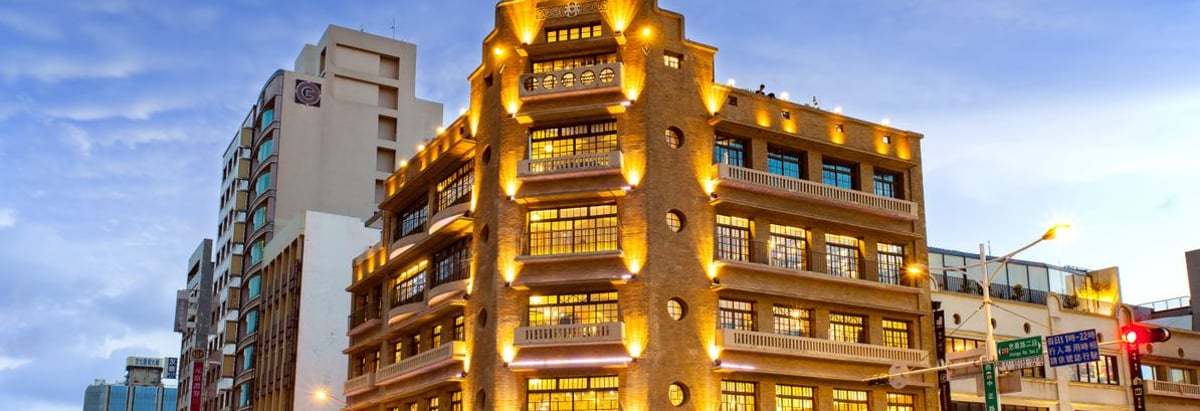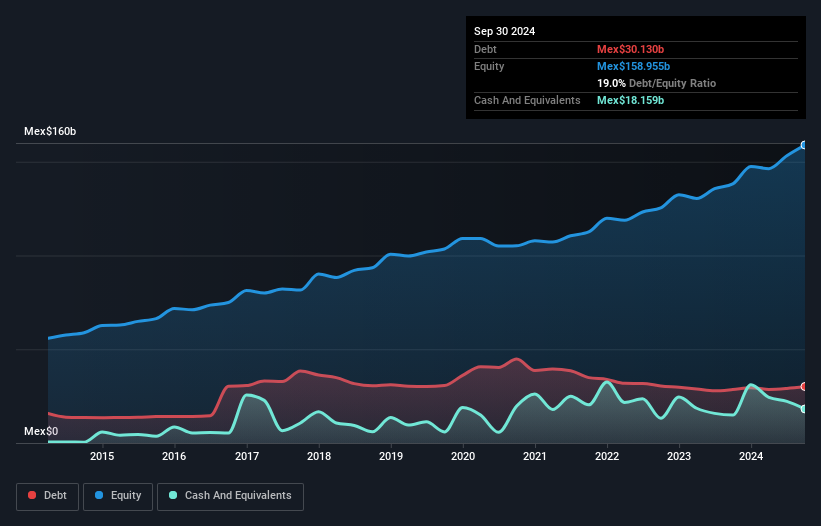- Mexico
- /
- General Merchandise and Department Stores
- /
- BMV:LIVEPOL C-1
El Puerto de Liverpool. de (BMV:LIVEPOLC-1) Has A Pretty Healthy Balance Sheet

The external fund manager backed by Berkshire Hathaway's Charlie Munger, Li Lu, makes no bones about it when he says 'The biggest investment risk is not the volatility of prices, but whether you will suffer a permanent loss of capital.' So it might be obvious that you need to consider debt, when you think about how risky any given stock is, because too much debt can sink a company. We note that El Puerto de Liverpool, S.A.B. de C.V. (BMV:LIVEPOLC-1) does have debt on its balance sheet. But the more important question is: how much risk is that debt creating?
When Is Debt Dangerous?
Debt is a tool to help businesses grow, but if a business is incapable of paying off its lenders, then it exists at their mercy. If things get really bad, the lenders can take control of the business. While that is not too common, we often do see indebted companies permanently diluting shareholders because lenders force them to raise capital at a distressed price. Of course, debt can be an important tool in businesses, particularly capital heavy businesses. The first thing to do when considering how much debt a business uses is to look at its cash and debt together.
Check out our latest analysis for El Puerto de Liverpool. de
How Much Debt Does El Puerto de Liverpool. de Carry?
You can click the graphic below for the historical numbers, but it shows that as of September 2024 El Puerto de Liverpool. de had Mex$30.1b of debt, an increase on Mex$28.5b, over one year. However, it does have Mex$18.2b in cash offsetting this, leading to net debt of about Mex$12.0b.

How Healthy Is El Puerto de Liverpool. de's Balance Sheet?
According to the last reported balance sheet, El Puerto de Liverpool. de had liabilities of Mex$60.3b due within 12 months, and liabilities of Mex$45.9b due beyond 12 months. Offsetting these obligations, it had cash of Mex$18.2b as well as receivables valued at Mex$45.2b due within 12 months. So its liabilities outweigh the sum of its cash and (near-term) receivables by Mex$42.8b.
While this might seem like a lot, it is not so bad since El Puerto de Liverpool. de has a market capitalization of Mex$140.3b, and so it could probably strengthen its balance sheet by raising capital if it needed to. However, it is still worthwhile taking a close look at its ability to pay off debt.
We use two main ratios to inform us about debt levels relative to earnings. The first is net debt divided by earnings before interest, tax, depreciation, and amortization (EBITDA), while the second is how many times its earnings before interest and tax (EBIT) covers its interest expense (or its interest cover, for short). This way, we consider both the absolute quantum of the debt, as well as the interest rates paid on it.
El Puerto de Liverpool. de's net debt is only 0.36 times its EBITDA. And its EBIT covers its interest expense a whopping 15.5 times over. So you could argue it is no more threatened by its debt than an elephant is by a mouse. Also good is that El Puerto de Liverpool. de grew its EBIT at 10% over the last year, further increasing its ability to manage debt. There's no doubt that we learn most about debt from the balance sheet. But ultimately the future profitability of the business will decide if El Puerto de Liverpool. de can strengthen its balance sheet over time. So if you want to see what the professionals think, you might find this free report on analyst profit forecasts to be interesting.
But our final consideration is also important, because a company cannot pay debt with paper profits; it needs cold hard cash. So we clearly need to look at whether that EBIT is leading to corresponding free cash flow. Looking at the most recent three years, El Puerto de Liverpool. de recorded free cash flow of 46% of its EBIT, which is weaker than we'd expect. That's not great, when it comes to paying down debt.
Our View
Happily, El Puerto de Liverpool. de's impressive interest cover implies it has the upper hand on its debt. And the good news does not stop there, as its net debt to EBITDA also supports that impression! All these things considered, it appears that El Puerto de Liverpool. de can comfortably handle its current debt levels. On the plus side, this leverage can boost shareholder returns, but the potential downside is more risk of loss, so it's worth monitoring the balance sheet. There's no doubt that we learn most about debt from the balance sheet. However, not all investment risk resides within the balance sheet - far from it. For example, we've discovered 1 warning sign for El Puerto de Liverpool. de that you should be aware of before investing here.
If you're interested in investing in businesses that can grow profits without the burden of debt, then check out this free list of growing businesses that have net cash on the balance sheet.
Valuation is complex, but we're here to simplify it.
Discover if El Puerto de Liverpool. de might be undervalued or overvalued with our detailed analysis, featuring fair value estimates, potential risks, dividends, insider trades, and its financial condition.
Access Free AnalysisHave feedback on this article? Concerned about the content? Get in touch with us directly. Alternatively, email editorial-team (at) simplywallst.com.
This article by Simply Wall St is general in nature. We provide commentary based on historical data and analyst forecasts only using an unbiased methodology and our articles are not intended to be financial advice. It does not constitute a recommendation to buy or sell any stock, and does not take account of your objectives, or your financial situation. We aim to bring you long-term focused analysis driven by fundamental data. Note that our analysis may not factor in the latest price-sensitive company announcements or qualitative material. Simply Wall St has no position in any stocks mentioned.
About BMV:LIVEPOL C-1
El Puerto de Liverpool. de
Operates a chain of department stores primarily in Mexico.
Flawless balance sheet, good value and pays a dividend.
Similar Companies
Market Insights
Community Narratives



